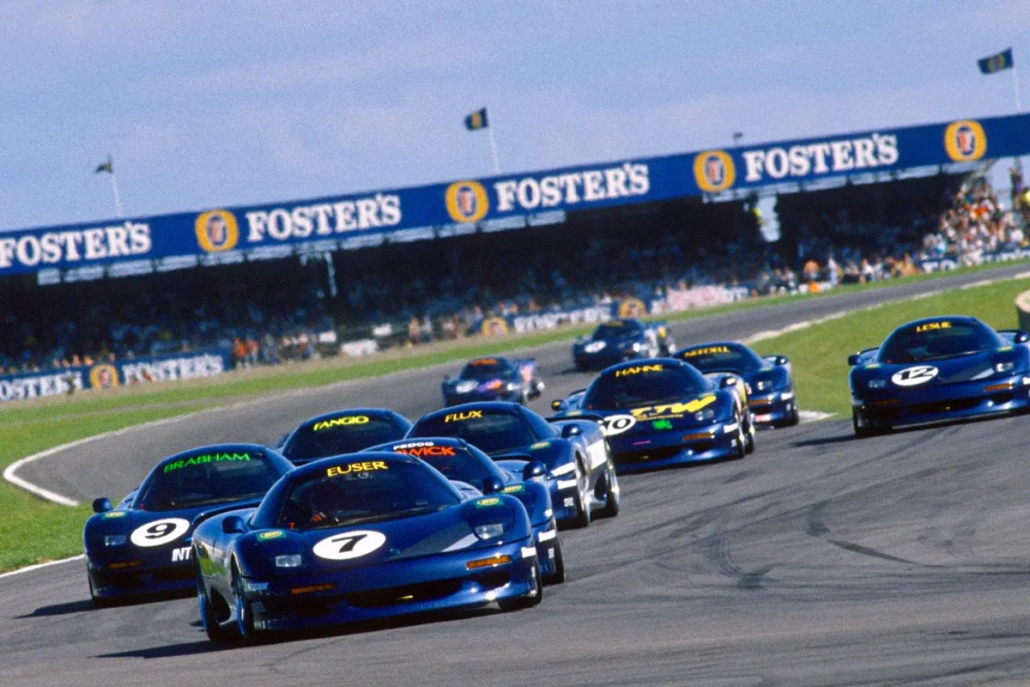Le Mans for the Road: Fangio II’s Winning Jaguar XJR-15 Returns to the Spotlight
In the heady wake of Jaguar’s 1988 Le Mans triumph with the thunderous XJR-9LM, a tantalising idea began to stir. What if you could take that same intoxicating, V12-powered glory — the carbon-clad fury of Group C dominance — and tame it just enough for the road? That vision belonged to none other than Tom Walkinshaw, the Scottish racer-turned-entrepreneur whose Tom Walkinshaw Racing outfit had masterminded Jaguar’s return to endurance racing glory.

Together with Peter Stevens — a man whose pencil would later shape the McLaren F1 — and a crack team including Eddie Hinckley, Dave Fullerton, Jim Router, and Andy Morrison, Walkinshaw set out to blur the line between racetrack and road. The result? The astonishing JaguarSport XJR-15.


Racing DNA, Unfiltered
Development began with a battle-scarred carbon tub from the XJR-8, salvaged from Win Percy’s dramatic crash at Le Mans in 1987. That chassis became the template for experimentation. The goal was bold yet simple: create a car that carried the DNA of a Group C monster, yet was usable enough for civilian hands.

So while the XJR-15 gained slightly more interior space and production viability, its soul remained pure Le Mans. With Stevens sculpting the bodywork, the XJR-15 became the world’s first road car built entirely from carbon fibre — beating the McLaren F1 to the title. The result was a low-slung, impossibly lean shape that looked every inch the racer it was.

At just 1,050 kg and with a naturally aspirated 6.0-litre V12 bellowing behind the cockpit, this was no poseur.
The Intercontinental Experiment
By the summer of 1990, the prototype was ready for Walkinshaw to test upon his return from Le Mans. At this stage, it remained a TWR project, but by its official launch in November that year, an agreement had been reached with Jaguar to produce the car under the JaguarSport name. The TWR R9R had become the JaguarSport XJR-15.

Production was limited to just 52 units between 1990 and 1992. Of these, 16 were prepared for competition in the Jaguar Intercontinental Challenge, a one-make racing series that supported three Formula 1 events at Monaco, Silverstone, and Spa-Francorchamps in 1991. This series showcased the XJR-15’s racing pedigree, with professional drivers competing for significant prizes, including a Jaguar XJR-S and a $1 million reward for the winner of the final race.

Chassis 048: A Podium-Winning Time Capsule
Which brings us to chassis 048 — quite possibly the finest of them all. Now available through Pendine, chassis 048 is revered within XJR-15 circles for its remarkable originality and unblemished history.



Source: Pendine
One of just three cars to clinch a race win in the Intercontinental Challenge, it was driven to victory at Silverstone by none other than Juan Manuel Fangio II — nephew of the legendary five-time Formula 1 World Champion. The moment was laced with symbolism: 35 years after his uncle won the British Grand Prix at the very same circuit, Fangio II crossed the line first in 048, securing not just the win, but a brand-new Jaguar XJR-S as part of the prize.

A Pairing Like No Other
Amazingly, that very XJR-S remains with the car today, forming a unique twin-set preserved in time. Finished in Mica over Grey and showing just 600 miles, the XJR-S is untouched and utterly pristine — a companion piece to one of motorsport’s best-kept secrets.

Originally acquired by Samsung chairman Lee Kun-Hee, who also owned the sister car raced by David Brabham, chassis 048 competed at Monaco and Spa, the latter with F1 veteran John Watson behind the wheel. After its final race, the car disappeared into private hands in Germany, later crossing the Atlantic to reside in the United States from 2006.

For years, rumours swirled about its whereabouts — until it re-emerged in 2020 and returned to the UK shortly after.
The Underrated Supercar King?
Among the pantheon of ‘90s supercars, the XJR-15 occupies a curious, compelling space. The Ferrari F40 asked for £160,000 in 1987. The Bugatti EB110 entered the scene at £285,000 in 1991. The McLaren F1, a year later, pushed the envelope to £460,000. Yet the XJR-15 race variant stood apart — lighter, rarer, and even more expensive, tipping the scales at over £500,000.



Source: Pendine
Today, those figures feel quaint, but the appeal of the XJR-15 has never been stronger. With its unmistakable Group C lineage, carbon-fibre construction, and unmatched exclusivity, this is a car for collectors who crave more than just performance — they want a story. And chassis 048 has one of the best.
Currently for sale with Pendine and available to view on Custodian here.


